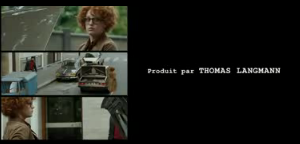Different types of Structure of Film Openings
Structure of film openings are when making a film. There are three types of film openings, these are:

- Narrative Openings
- Credits over a blank screen
- Discrete Openings
- Stylised Openings
A Discrete title sequences is shown to give the audience large amounts of information on both the characters and setting of the film. Discrete title sequences are separately edited making them stand apart from other film openings. Looking at this type of title sequence they are heavily edited that clearly represent most opening credits and film titles. Using a discrete title sequence is a good way in getting the audience started before getting introduced to the film this is done through the fast jump cuts which often could be represented unclear in the views mind therefore allowing not to much information
be revealed.
be revealed.
Narrative opening is usually the opening of the story/beginning of the film. It's usually a scene from the movie that is pivotal in the storyline, This maybe a flashback or a flash-forward or introduce a character. A narrative opening is usually engaging and gets the audience guessing what is happening or going to happen NEXT?...
Stylised editing title sequence:
Stylised editing is represented as to be very sophisticated that will take a long time to do. A stylised title sequence is often split into 2/3 equal parts allowing us to see actions taken place at the same time but through different perspectives. Most stylised title sequences tend to open with blank credits on the screen followed by the 2/3 equal parts of action after. Mezrine 2008 is a key example of stylised editing in the opening of a title sequence: SEE BELOW
 |
| Split into 3 parts, different perspectives. |

 |
| Same shot but focus changes. (CLEVER) |
PLANNING*As a group we looked at doing are thriller in a Discrete film opening style. They are stylish and have good and interesting edits; it mainly consists of the special effects and editing parts that are supported by the credits and titles.
No comments:
Post a Comment